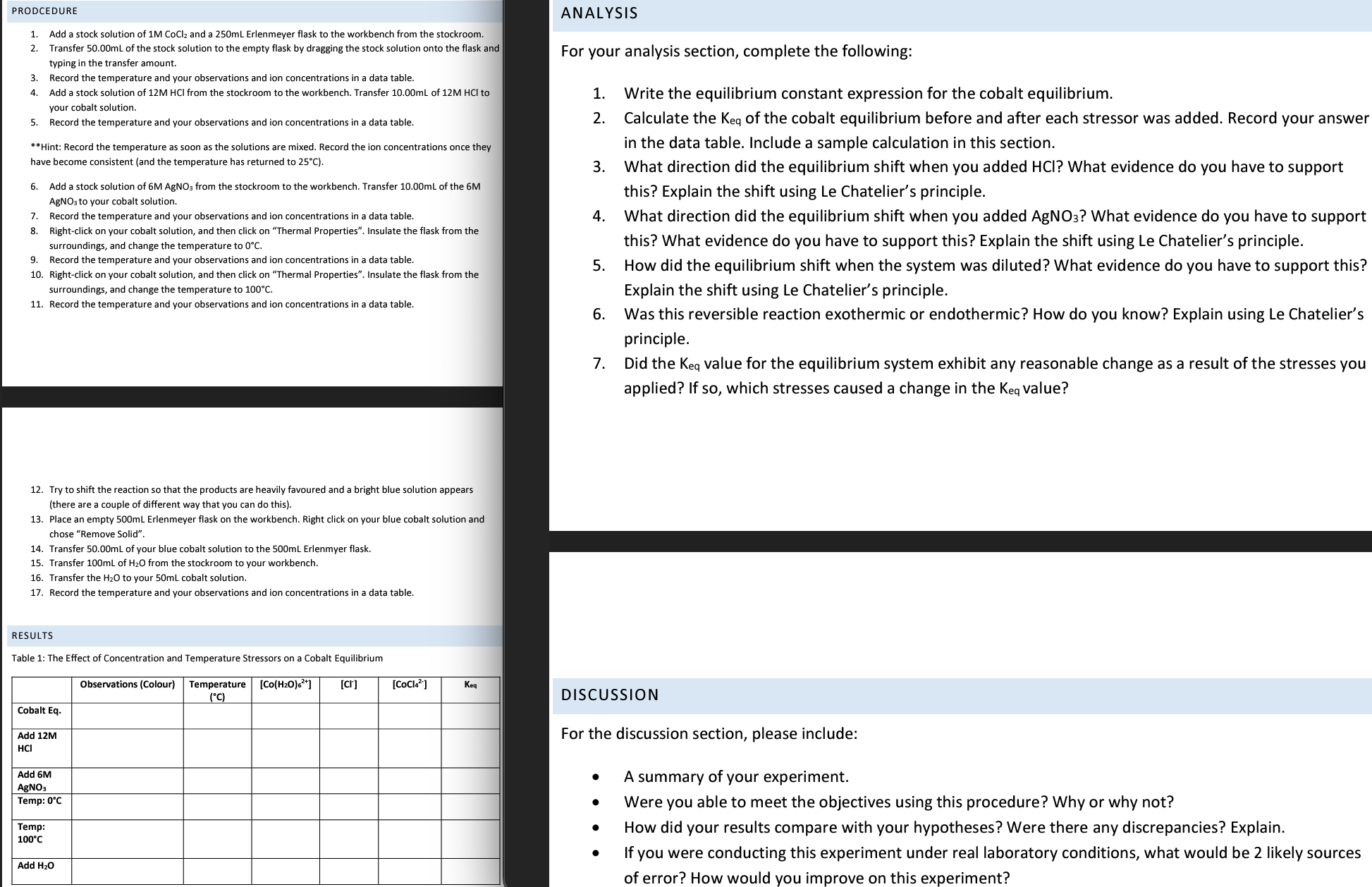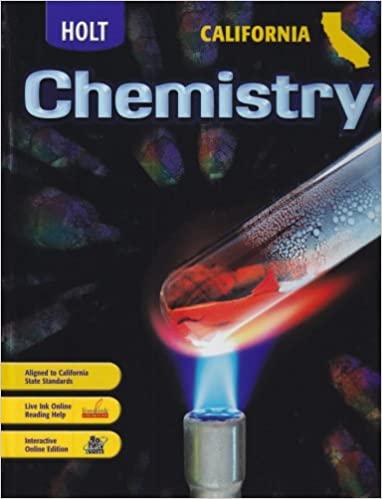Answered step by step
Verified Expert Solution
Question
1 Approved Answer
PROCEDURE 1 . Add a stock solution of 1 M CoCl 2 and a 2 5 0 mL Erlenmeyer flask to the workbench from the
PROCEDURE Add a stock solution of M CoCl and a mL Erlenmeyer flask to the workbench from the stockroom. Transfer mL of the stock solution to the empty flask by dragging the stock solution onto the flask and typing in the transfer amount. Record the temperature and your observations and ion concentrations in a data table. Add a stock solution of M HCl from the stockroom to the workbench. Transfer mL of M HCl to your cobalt solution. Record the temperature and your observations and ion concentrations in a data table. Hint: Record the temperature as soon as the solutions are mixed. Record the ion concentrations once they have become consistent and the temperature has returned to deg C Add a stock solution of M AgNO from the stockroom to the workbench. Transfer mL of the M AgNO to your cobalt solution. Record the temperature and your observations and ion concentrations in a data table. Rightclick on your cobalt solution, and then click on Thermal Properties Insulate the flask from the surroundings, and change the temperature to deg C Record the temperature and your observations and ion concentrations in a data table. Rightclick on your cobalt solution, and then click on Thermal Properties Insulate the flask from the surroundings, and change the temperature to deg C Record the temperature and your observations and ion concentrations in a data table. Try to shift the reaction so that the products are heavily favoured and a bright blue solution appears there are a couple of different way that you can do this Place an empty mL Erlenmeyer flask on the workbench. Right click on your blue cobalt solution and chose Remove Solid Transfer mL of your blue cobalt solution to the mL Erlenmyer flask. Transfer mL of HO from the stockroom to your workbench. Transfer the HO to your mL cobalt solution. Record the temperature and your observations and ion concentrations in a data table. RESULTS Table : The Effect of Concentration and Temperature Stressors on a Cobalt Equilibrium Observations Colour Temperature deg CCoHOClCoCl Keq Cobalt Eq Add M HCl Add M AgNO Temp: deg C Temp: deg C Add HO ANALYSIS For your analysis section, complete the following: Write the equilibrium constant expression for the cobalt equilibrium. Calculate the Keq of the cobalt equilibrium before and after each stressor was added. Record your answer in the data table. Include a sample calculation in this section. What direction did the equilibrium shift when you added HCl What evidence do you have to support this? Explain the shift using Le Chateliers principle. What direction did the equilibrium shift when you added AgNO What evidence do you have to support this? What evidence do you have to support this? Explain the shift using Le Chateliers principle. How did the equilibrium shift when the system was diluted? What evidence do you have to support this? Explain the shift using Le Chateliers principle. Was this reversible reaction exothermic or endothermic? How do you know? Explain using Le Chateliers principle. Did the Keq value for the equilibrium system exhibit any reasonable change as a result of the stresses you applied? If so which stresses caused a change in the Keq value? DISCUSSION For the discussion section, please include: A summary of your experiment. Were you able to meet the objectives using this procedure? Why or why not? How did your results compare with your hypotheses? Were there any discrepancies? Explain. If you were conducting this experiment under real laboratory conditions, what would be likely sources of error? How would you improve on this experiment?

Step by Step Solution
There are 3 Steps involved in it
Step: 1

Get Instant Access to Expert-Tailored Solutions
See step-by-step solutions with expert insights and AI powered tools for academic success
Step: 2

Step: 3

Ace Your Homework with AI
Get the answers you need in no time with our AI-driven, step-by-step assistance
Get Started


